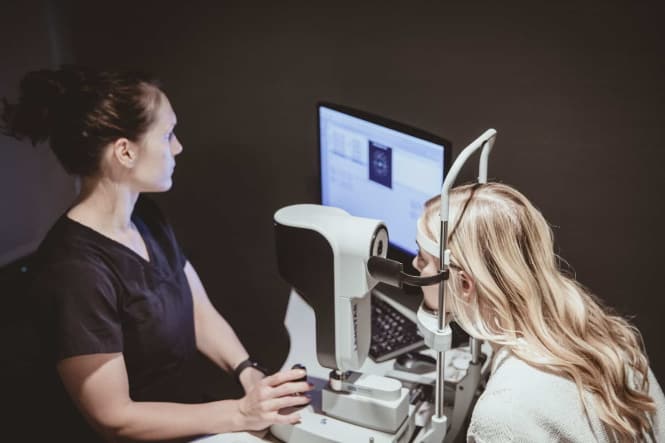The human eye goes on a journey of growth hitting vision milestones in the same manner as the rest of the body. It’s a misconception that babies are born with full-sized eyes. The eyes continue to grow throughout a child’s youth and into their early adulthood. With that growth comes developments in vision.
At Durrie Vision in Kansas City, we believe information is power. Understanding the path and milestones of vision can be important in your overall eye health. It’s important to know what to expect from your vision as you age so you know if something is amiss.
Eyesight in Infants
When you’re born, your vision is about 20/100 and you can’t see much in terms of color beyond black, white, and gray. Babies use their eyes a lot in the first few months of life, so it’s important to track their vision. Vision problems in infants can lead to other developmental delays if they’re not addressed.
By five months old, most babies have clear color vision, but their eyes are still developing important tools like depth perception. At about a year old, most babies have 20/20 vision and the ability to judge distances.
Signs of eye or vision problems in babies
If you notice any of the following, take your baby for an eye exam.
- Excessive tearing
- Red, crusty eyelids
- Constant eye movements
- Extreme sensitivity to light
- White within the pupil of the eye
Childhood Vision Milestones
Most children should display good hand-eye coordination and have decent visual memory by the time they’re school-aged. Vision problems like farsightedness, nearsightedness, or astigmatism can be common and by the time the child is in school you should be able to notice if they’re having issues. Check for things like excessive squinting, head-tilting, or frustration toward reading if you’re concerned about a child’s vision.
Adult Eyes
The eye stops growing somewhere around the age of 18-22. That’s why we won’t perform LASIK on anyone younger than 18 years old. By the time you’re in your early 20s you should have a good understanding of your vision. If you’re in glasses at that point you’ve probably had them since childhood to help with vision issues like nearsightedness or farsightedness. This is an excellent time to consider vision correction procedures like LASIK.
But if you have perfect vision in your 20s, you’ll probably maintain that perfect vision for the next couple of decades. Because the lens inside your eye continues to change as you age, everyone will eventually fall victim to presbyopia—farsightedness caused by aging. The lens in your eye grows thicker and less flexible, affecting your ability to focus. By the time they’re in their 40s, many people start to wear reading glasses.
Vision correction for mature eyes
If you’ve made it all the way into your 50s with no significant vision issues but you’re losing your ability to focus on near objects, you may look for ways to correct your vision without glasses. At this stage, we most often recommend the refractive lens exchange procedure. The only way to stop the lens inside your eye from growing thicker and more cloudy is to replace it entirely. We implant a clear artificial lens designed to provide focusing power at near, far, and intermediate distances.
Schedule a free consultation today
Find out if you’re a candidate for refractive lens exchange, LASIK, or any of our other advanced vision correction procedures.
Schedule Free Consultation | Take Self-Candidacy Test

Author Bio: Jason E. Stahl, MD
Top Doctors: https://www.castleconnolly.com/top-doctors/jason-e-stahl-ophthalmology-129cc002150
Best Cataract Surgeons: https://bestcataractsurgeons.com/cataract-surgeons/jason-e-stahl/

